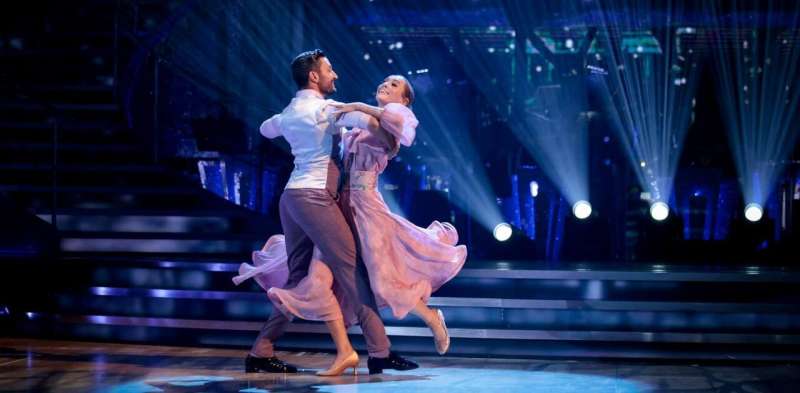
This year’s series final of Strictly Come Dancing will feature actor Rose Ayling-Ellis. Ayling-Ellis is the show’s first ever contestant who is deaf. She has wowed Strictly viewers throughout the series and achieved excellent scores from the judges. But how is it possible that a person who is deaf can dance to music they can’t actually hear?
Deafness or hearing loss usually involves a problem with the ear. In the ear, tiny hair cells convert soundwaves into electrical signals that travel to the brain. If these electrical signals are missing or reduced, the hearing parts of the brain will not be able to fully understand sound.
But the brain is an excellent problem solver. If sound is missing, it will use other sources of information to understand what’s happening around us. What a person sees, and vibrations felt through the body, can be particularly helpful sources of information for those who are deaf or hearing-impaired.
To learn how to dance, the brain views the actions of others moving to music and combines this with careful counting. Many people without hearing loss also do this when learning a dance—the steps are taught to beats or counts, which are then practiced before being put to music. For someone with hearing loss, while the appreciation of the music differs, the learning through observation and counting is similar.
In addition, the tactile information provided through music is very helpful for people with hearing loss. Instead of listening to music, a person who is deaf may feel the music, literally sensing the vibrations through their body.
A process called cross-modal neuroplasticity also helps a person who is deaf to be able to dance to music. The brain is remarkably adaptable and will “repurpose” any brain areas that are not being used. So, if the hearing areas of the brain are not being used for responding to sound because a person is deaf, these parts of the brain may instead respond to other things, such as visual or tactile information.
Technologies like sensory substitution devices can further assist people with sensory loss. Sensory substitution is a technique where missing sensory information is converted into an alternative sense, to help people who are deaf or blind better understand the world around them.
One example is a vibrating vest that allows people who are deaf or have hearing loss to feel sound through their skin. The vest contains a microphone which picks up sound. The technology in the vest converts the sounds into vibrating patterns that the wearer can feel on their torso.
As the brain is so adaptable and “plastic,” after some training to understand which vibrating patterns match with which sounds, people with hearing loss can experience the auditory world in a new way. Although we haven’t seen Ayling-Ellis use this kind of technology on the show, similar devices have been used by dancers with hearing problems.
Ayling-Ellis is not the only well-known figure to highlight the remarkable capability of a brain struggling to hear. Composer Ludwig van Beethoven developed severe hearing loss in mid-life, and seemingly used vibrational information in music to help him continue to compose.
As his hearing deteriorated, he is reported to have favored a piano constructed in such a way that the sounding board was connected to the outer frame, which conveyed powerful vibrations to Beethoven’s fingers and through the floor to his feet. These vibrations were further amplified through a metal resonator that Beethoven placed on his pianos.
Source: Read Full Article
